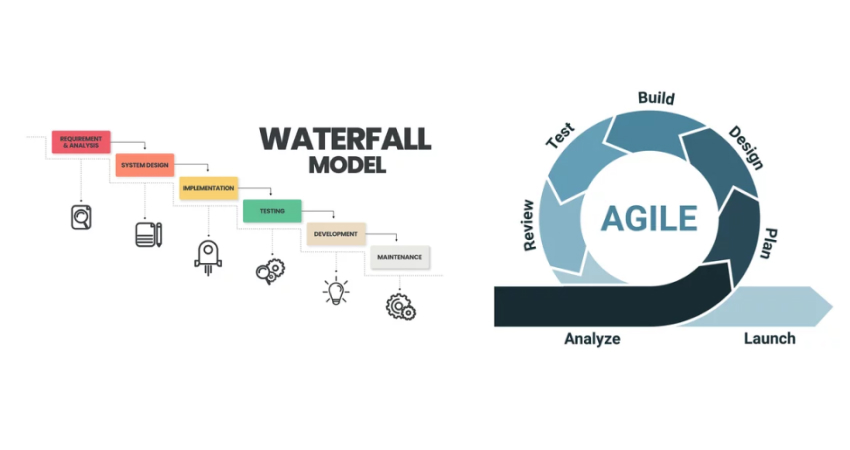Introduction:
Software development methodologies play a crucial role in shaping the approach and success of software projects. Among the most widely used methodologies are Agile, Waterfall, and Scrum. Each methodology has its own strengths and weaknesses, and understanding the differences between them is essential for project managers and development teams. In this article, we will provide a comprehensive comparison of Agile, Waterfall, and Scrum methodologies, exploring their key principles, characteristics, and suitability for different project types.
Waterfall Methodology:
The Waterfall methodology follows a sequential, linear approach to software development. We will discuss the key features of Waterfall, including its phases such as requirements gathering, design, implementation, testing, and maintenance. The article will explore the advantages and disadvantages of Waterfall, such as its emphasis on thorough documentation and predictability, as well as its limitations in adapting to changing requirements and lack of flexibility. We will also discuss scenarios where Waterfall is most suitable, such as projects with well-defined and stable requirements.
Agile Methodology:
The Agile methodology focuses on flexibility, collaboration, and iterative development. We will delve into the core principles of Agile, including customer collaboration, frequent delivery of working software, and embracing change. The article will explore the Agile Manifesto and its values and principles. We will discuss popular Agile frameworks such as Scrum, Kanban, and Lean, and highlight their key features and benefits. Additionally, we will discuss the advantages of Agile, such as improved adaptability, enhanced customer satisfaction, and better team collaboration. However, we will also address challenges such as the need for strong communication and self-organizing teams.
Scrum Methodology:
Scrum is an Agile framework that focuses on incremental development and iterative delivery. We will explore the key components of Scrum, including roles (such as Scrum Master and Product Owner), artifacts (such as Product Backlog and Sprint Backlog), and ceremonies (such as Sprint Planning, Daily Stand-up, Sprint Review, and Sprint Retrospective). The article will discuss the benefits of Scrum, such as improved transparency, increased productivity, and better risk management. We will also address challenges specific to Scrum, such as the need for experienced Scrum Masters and Product Owners.
Comparison and Selection Considerations:
In this section, we will provide a detailed comparison of Agile, Waterfall, and Scrum methodologies. We will discuss their approach to project planning, requirements management, development process, team collaboration, and adaptability to changing requirements. The article will highlight scenarios where each methodology is most suitable and provide insights into factors such as project size, complexity, and customer involvement that influence the methodology selection. Additionally, we will address hybrid approaches that combine elements of different methodologies to meet specific project needs.
Conclusion:
Choosing the right software development methodology is critical for the success of projects. The Agile methodology, with its emphasis on flexibility, collaboration, and iterative development, has gained popularity in recent years. However, the Waterfall methodology still has its place in certain scenarios that require a more structured and predictable approach. Scrum, as an Agile framework, offers a balance between flexibility and structure, making it suitable for many projects. By understanding the characteristics, strengths, and limitations of Agile, Waterfall, and Scrum methodologies, project managers and development teams can make informed decisions that align with project requirements and organizational goals.

